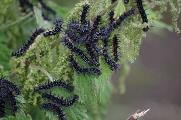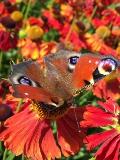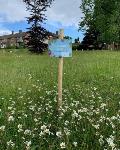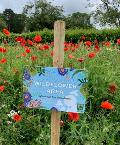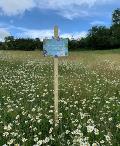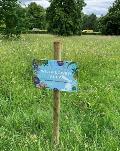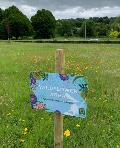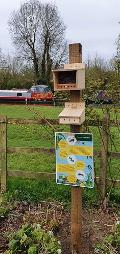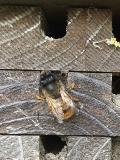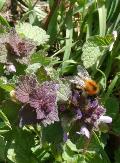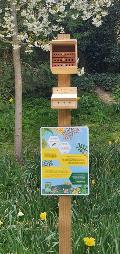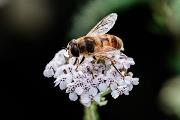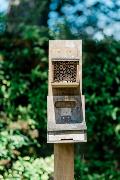Biodiversity and conservation
In the past 50 years, global wildlife populations have fallen by 68 per cent. This biodiversity loss is driven by changes in land use, climate change, herbicides and pollution. Taking action to improve biodiversity locally is a key element of our Climate and Ecological Emergency work, which is one of our six Corporate Priorities.
Biodiversity duty
In line with the strengthened biodiversity duty introduced by the Environment Act 2021, we are reviewing the actions we can take to conserve and enhance biodiversity. A list of policies and objectives arising from this review will be published once they have been formally agreed. We will then publish a report at regular intervals detailing progress on the actions identified. The first report is scheduled for publication in 2026.
Wildflower meadows
The UK has lost 97 per cent of its wildflower meadows in less than 100 years.
Wildflower meadows and areas of long grass provide a range of essential benefits:
- Wildflowers provide essential homes and food sources for pollinators such as bees, butterflies and other insects, which in turn are crucial for supporting larger wildlife populations that depend on them, such as birds and mammals.
- They can contain up to 40 different species per square metre, making them a precious resource for enhancing biodiversity and preserving native UK species.
- They can store up to three tonnes of carbon per hectare. This helps to reduce the amount of carbon in the atmosphere and mitigate climate change.
- These types of habitats are much better suited to dealing with extremes of wet and heat, and are able to absorb large quantities of water – making them useful in helping to play a role in mitigating future flooding events.
- These biodiverse areas act as a gateway for everyone to enjoy the natural world in their local community and provides more opportunities to learn more about nature and interact with wildlife.
We have been actively creating more wildflower-rich and biodiverse grasslands across the borough. These areas are managed differently, to encourage them to flourish. The grass may have a different cutting regime to encourage wildflowers to grow, be seeded with wildflower seeds, or laid with wildflower turf.
We have created an interactive wildflower map to show which areas we are carrying out this work. Take a look and discover which areas are close to you:
To help you identify these areas, we have also installed some colourful signs in the areas where we have created meadows - look out for them on your next walk.
Please note: it can take a while for these areas to establish - in the meantime they may include docks, thistles and nettles. While many people would class these plants as weeds and would not want them growing in their garden, in the wild, these are important food and breeding sources for many different species and with time the areas will become beautiful biodiversity hotspots.
Solitary bees
Solitary bees are in decline, due to loss of habitat and modern farming practices. They provide an essential function, pollinating our crops and ensuring that plant communities are healthy and productive. Without them, mammals and birds would not have the seeds, berries or plants on which they depend, with approximately one in three mouthfuls of food and drink requiring pollination.
As part of our biodiversity commitment, we have been introducing bee houses to our parks and open spaces. These little houses encourage declining solitary bees, like the Red Mason and Leaf-cutter bees to start nesting and laying eggs in the small cardboard tubes that the houses hold.
At the end of the summer, these tubes are safely transported across to Mason Bees UK. The bee cocoons are removed from the tubes and checked for parasites and anything else that may harm them. Once this is done, the cocoons are kept safe over the winter. When spring arrives, they are sent back to us and the whole process starts again.
Find out more about how you can help solitary bees.
Wild honey bees
There are three wild bee hives in our parks and gardens - one in the Water Gardens and two in Gadebridge Park. The hives were made and installed by Matt Somerville, who runs Bee Kind Hives. Matt is passionate and knowledgeable about everything to do with wild honey bees.
He created the hives by hollowing out three pine logs, leaving a 10cm wall for insulation. He then added holes to let the bees in and out, and finally a removable base, so that we can see what goes on inside. The hives are hung four metres high in a tree.
Everything is designed to allow the bees to live naturally. No honey is extracted, the bees are not fed sugar (as they are in managed hives), and the log is the right shape for the bees to live naturally. This all means the bee colony that moves into the hives will be healthy, strong and be able to cope with viruses and pathogens.
Pollinator-friendly plants
Pollinators such as bees, butterflies and other invertebrates are critical to our own existence. To ensure their ongoing survival, we plant pollinator-friendly plants wherever we can. These plants provide the much-needed nectar and pollen that bees, butterflies and other insects rely on to survive. Examples of pollinator-friendly plants include Nepeta (Cat mint), Achillea, Helenium and Echinacea.
Find out more about plants for pollinators on the Royal Horticultural Society website.
If you would like any advice on how you can help pollinators, please email biodiversity.wildlife@dacorum.gov.uk
Butterfly bank
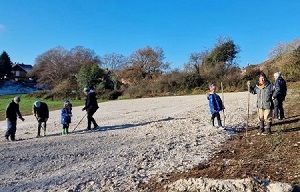
In partnership with charity Butterfly Conservation and the Friends of Halsey Field, we created a butterfly bank in Spring Fields, Warners End. This involved stripping off the turf and a layer of top soil, putting 300 tonnes of chalk on the area and sowing wildflower seeds with the help of local volunteers.
The butterfly bank will help increase local biodiversity by aiming to encourage a local rare butterfly - the Dingy Skipper - and other species of butterflies, birds, bats and small mammals.
Gadebridge Park River Restoration
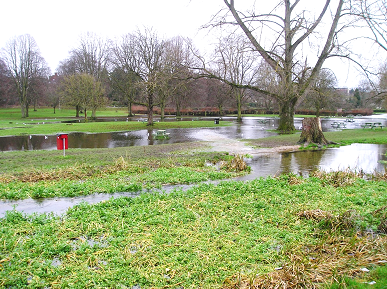
We're working with the Environment Agency and Affinity Water to help restore the River Gade in Gadebridge Park, a globally rare and valuable chalk stream. The project will provide multiple benefits, including improved habitats for wildlife, the protection of water resources for both people and the environment, and allowing local residents and visitors to get closer to the river and enjoy nature.
This project is part of Revitalising Chalk Rivers, a wider programme of projects led by the Environment Agency and Affinity Water that aims to protect and restore rare chalk streams.
Our latest proposals will improve the river in the lower section of Gadebridge Park, between the Grade II-listed White Bridge and Queensway.
The Environment Agency and Affinity Water are funding the river restoration project and we will be contributing to its recreational and amenity aspects.
Find out the latest on this project on the Environment Agency website.
More information
If you'd like to join the Environment Agency’s mailing list to receive future updates or if you have any questions regarding the river restoration project, please email gadebridgepark@environment-agency.gov.uk. Questions about all other aspects of Gadebridge Park should be sent to biodiversity.wildlife@dacorum.gov.uk.
Improve your biodiversity
The Woodland Trust has tips on how to increase biodiversity in your garden.
Read more about environmental gardening for wellbeing on the Royal Horticultural Society website.
Page Last Updated: Tuesday, 25 June 2024 at 08:16 AM
We are currently experiencing issues with our online payment system. Our provider is working to fix the problem as soon as possible. If your payment will not go through, please try again later. We apologise for any inconvenience caused

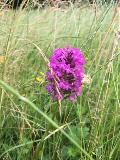
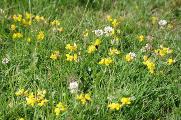
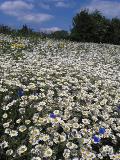
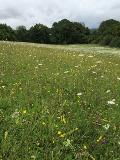
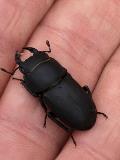
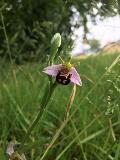
-kodak.tmb-thumbnail.jpg?Culture=en&sfvrsn=965c029e_1)
